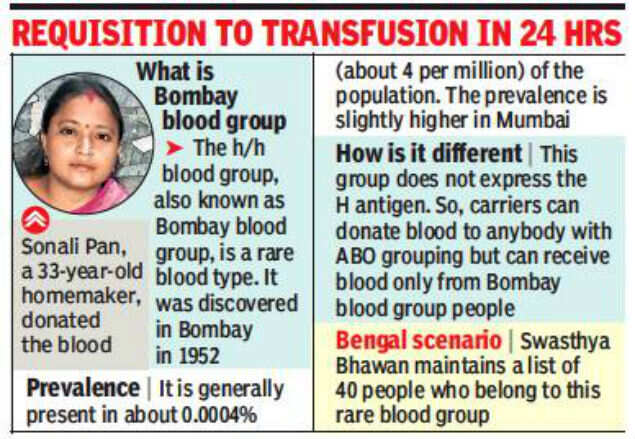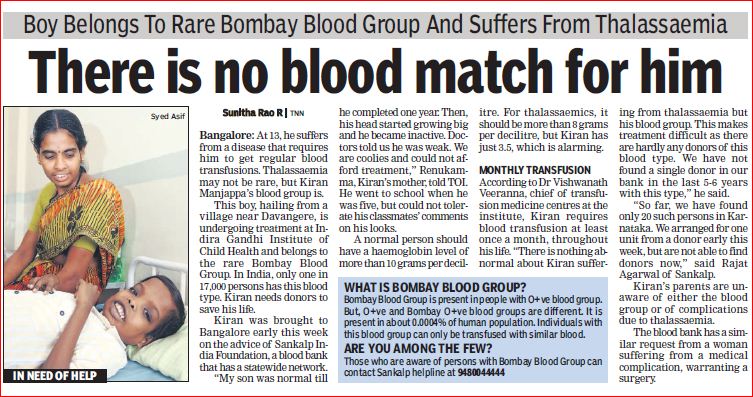Bombay Blood Group
What is blood?
Blood is a body fluid in humans and other animals that delivers necessary substances such as nutrients and oxygen to the cells and transports metabolic waste products away from those same cells.
Now the question arises:
Even plants are living organisms although they don't have blood,then which substance does these functions in their body?
Well our blood is red in colour, plants have green which is chlorophyll in their leaves and if we look at the structure of a chlorophyll molecule it's really similar to a hemoglobin molecule.
Also known as liquid chlorophyll, so called plant blood is responsible for giving plants their green colour and is needed for the conversion of sunlight into energy in plants.
Plants also have Sap which is a fluid transported in xylem cells or phloem sieve tube elements of a plant. These cells transport water and nutrients throughout the plant.

Blood Groups
Now, talking about blood groups we have A,B,AB and O and again each group has the positive and negative divisions.
A blood type(also called a blood group) is a classification of blood, based on the presence and absence of antibodies and inherited antigenic substances on the surface of red blood cells(RBCs).

In transfusions of packed red blood cells, individuals with type O negative blood are often called universal donors. Those with type AB positive blood are called universal recipients.
O negative donors are often called Universal donors because anyone can receive the red blood cells from their donations.
Although about 8% of the population has O negative blood,it accounts for around 13% of hospitals requests for red blood cells.
Type AB is considered the Universal Recipient,as they have both A and B antigens on their red blood cells and thus their body does not have antibodies against A or B antigen cells, so they can receive blood from any blood type.

hh, or the Bombay blood group, is a rare blood type. This blood phenotype was first discovered in Bombay, now known as Mumbai, in India, by Dr.Y.M. Bhende in 1952. It is mostly found in South Asia(India,Bangladesh,Pakistan) and parts of Middle East such as Iran.
This very rare phenotype is generally present in about 0.0004%(about 4 per million) of the human population, though in some places such as Mumbai locals can have occurrences in as much as 0.01%(1 in 10,000) of inhabitants.
The first person found to have the Bombay phenotype had an interesting blood type that reacted to the other blood types in a way never seen before. The serum contained antibodies that attacked all red blood cells of normal ABO phenotype. The red blood cells appeared to lack all of the ABO blood group antigens and to have an additional antigen that was previously unknown.

Individuals with the rare Bombay phenotype(hh) do not express H antigen(also called substance H),the antigen which is present in blood group O. As a result, they cannot make A antigen(also called substance A) or B antigen(substance B) on their red blood cells,whatever alleles they may have of the A and B blood group genes, because A and B antigen are made from H antigen.
For this reason people who have Bombay phenotype can donate red blood cells to any member of the ABO blood group system(unless some other blood group factor gene,such as Rh, is incompatible) but they cannot receive blood from any member of the ABO blood group system(which always contain one or more of A,B or H antigens),but only from other people who have Bombay phenotype.

Due to the rarity of the hh blood type,patients face problem during a blood transfusion,often leading to death due to non-availability of hh blood.
- In India,one person in 7,600 to 10,000 is born with this type.
- The individuals with Bombay blood group can only be transfused blood from individuals of Bombay hh phenotype only which is very rare.
- Rejection may occur if they receive blood from A,B,AB or O blood group.
- In contrast,hh blood group can donate their blood to ABO blood types.
- This group is generally not stored in blood banks,mainly because it is rare and the shelf life of blood is 35-42 days.
Therefore people must donate blood which is kept safe in the Blood Banks.Each drop of blood is very precious and in emergency this stored blood can not only save other people's life but also their's as well.
Comments
Post a Comment
I am always open for questions and if anyone has any doubt or suggestions,please let me know.